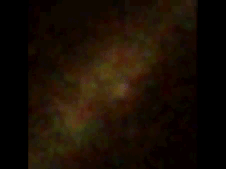
Vela Pulsar
Encyclopedia
The Vela Pulsar is a radio, optical, X-ray and gamma-emitting pulsar
associated with Vela Supernova Remnant
, in the constellation
of Vela
.
, made by astronomers at the University of Sydney
in 1968,http://adsabs.harvard.edu/cgi-bin/nph-bib_query?bibcode=1968Natur.220..340L was direct observational proof that supernovae form neutron stars.
, for reasons that appear historically unclear. Because of the possible confusion with Vela X-1
(= 4U 0900-40), a very different kind of object that happens to lie nearby, referring to it as either "Vel X" or "Vela X" seems inadvisable.


es (i.e., 10 times the mass of Jupiter
) and orbit the parent star at a distance of 0.3 Astronomical Unit
s. Given the age of the article in question, it's likely this claim will turn out to be spurious; at any rate, it is as yet uncomfirmed.
Pulsar
A pulsar is a highly magnetized, rotating neutron star that emits a beam of electromagnetic radiation. The radiation can only be observed when the beam of emission is pointing towards the Earth. This is called the lighthouse effect and gives rise to the pulsed nature that gives pulsars their name...
associated with Vela Supernova Remnant
Vela Supernova Remnant
The Vela supernova remnant is a supernova remnant in the southern constellation Vela. Its source supernova exploded approximately 11,000-12,300 years ago...
, in the constellation
Constellation
In modern astronomy, a constellation is an internationally defined area of the celestial sphere. These areas are grouped around asterisms, patterns formed by prominent stars within apparent proximity to one another on Earth's night sky....
of Vela
Vela (constellation)
Vela is a constellation in the southern sky. Its name is Latin for the sails of a ship, and it was originally part of a larger constellation, the ship Argo Navis, which was later divided into three parts, the others being Carina and Puppis.-Stars:...
.
Supernova origins
The association of the Vela pulsar with the Vela Supernova RemnantVela Supernova Remnant
The Vela supernova remnant is a supernova remnant in the southern constellation Vela. Its source supernova exploded approximately 11,000-12,300 years ago...
, made by astronomers at the University of Sydney
University of Sydney
The University of Sydney is a public university located in Sydney, New South Wales. The main campus spreads across the suburbs of Camperdown and Darlington on the southwestern outskirts of the Sydney CBD. Founded in 1850, it is the oldest university in Australia and Oceania...
in 1968,http://adsabs.harvard.edu/cgi-bin/nph-bib_query?bibcode=1968Natur.220..340L was direct observational proof that supernovae form neutron stars.
Characteristics
It has a period of 89 ms (the shortest known at the time of its discovery) and the remnant from the supernova explosion is estimated to be travelling at 1,200 km/s. It has the third brightest optical component of all known pulsars (V = 23.6 mag) which pulses twice for every single radio pulse. The Vela pulsar is the brightest persistent object in the high energy gamma ray sky.Vela X confusion
Note that this object has often been called Vela XVela X
Vela X is a strong radio pulsar source, that is also associated with a very strong 100 MeV gamma-ray source, and the rather weak Uhuru X-ray source 4U 0833-45....
, for reasons that appear historically unclear. Because of the possible confusion with Vela X-1
Vela X-1
Vela X-1 is a pulsing, eclipsing high-mass X-ray binary system, associated with the Uhuru source 4U 0900-40 and the supergiant star HD 77581....
(= 4U 0900-40), a very different kind of object that happens to lie nearby, referring to it as either "Vel X" or "Vela X" seems inadvisable.


A planetary companion?
In early 1970, Curtis proposed the presence of a planetary companion to explain certain variations observed in the pulsar's timing. The putative object would have a mass of about 0.01 Solar massSolar mass
The solar mass , , is a standard unit of mass in astronomy, used to indicate the masses of other stars and galaxies...
es (i.e., 10 times the mass of Jupiter
Jupiter
Jupiter is the fifth planet from the Sun and the largest planet within the Solar System. It is a gas giant with mass one-thousandth that of the Sun but is two and a half times the mass of all the other planets in our Solar System combined. Jupiter is classified as a gas giant along with Saturn,...
) and orbit the parent star at a distance of 0.3 Astronomical Unit
Astronomical unit
An astronomical unit is a unit of length equal to about or approximately the mean Earth–Sun distance....
s. Given the age of the article in question, it's likely this claim will turn out to be spurious; at any rate, it is as yet uncomfirmed.
External links
- Glitch noted http://www.hartrao.ac.za/news/040707vela/index.html
- Chandra image http://chandra.harvard.edu/photo/2000/vela/index.html
- Chandra images show pronounced jet http://chandra.harvard.edu/photo/2003/vela_pulsar/index.html

